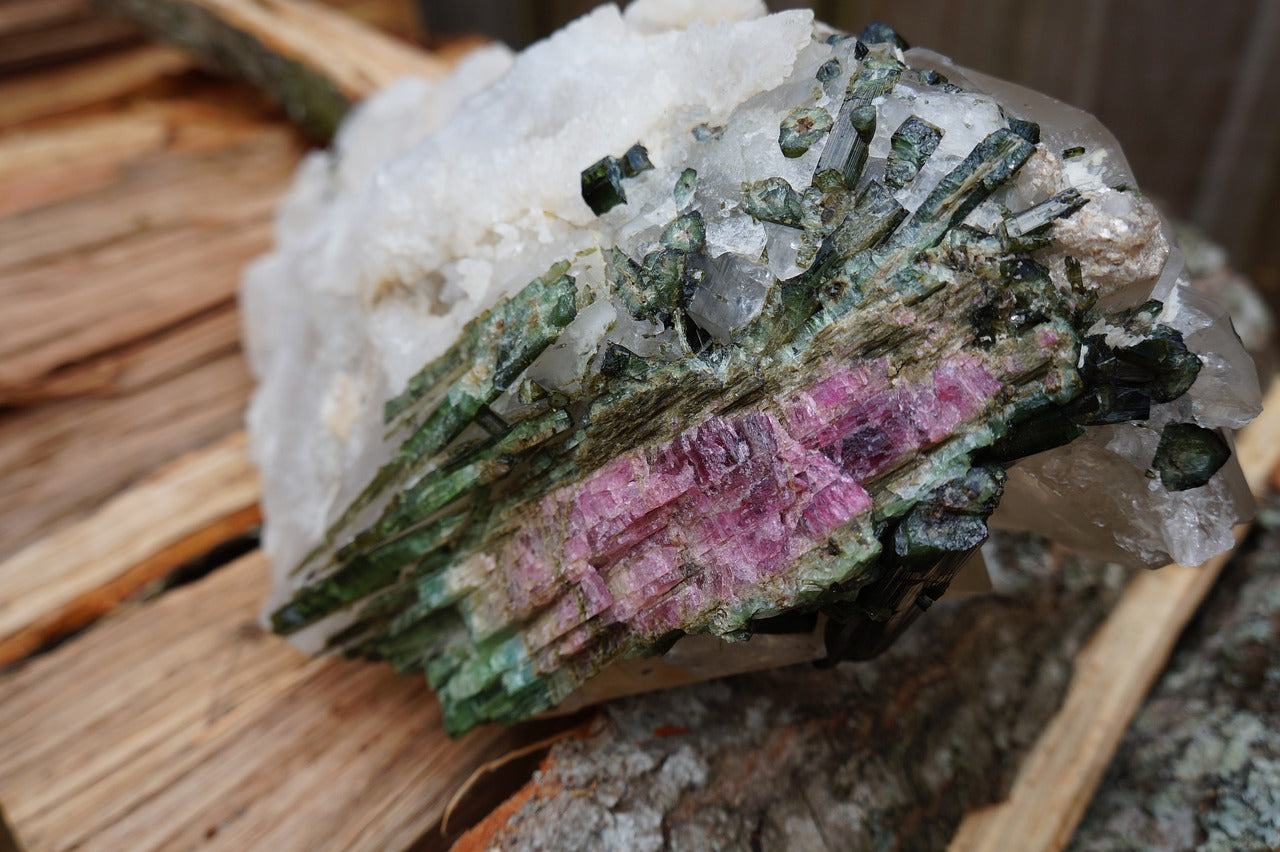Tourmalines are among many jewelry designers’ favorite as it comes in a wide array of colors that can be styled into a unique engagement ring without breaking the bank - it’s often mistaken for the higher-valued emerald or ruby.
The word 'tourmaline' came from the Sinhalese word turmali, which means a stone of mixed color. The versatility of this stone makes it a perfect match for any fashion statement and bold personalities - whether one wants to stand out in a single color, bi-color or multi-color. If you like a more colorful alternative to opal, tourmaline is a perfect choice.
Tourmaline: A Stone of Healing and Protection
While geologists may marvel at the mineral composition that makes this semi-precious stone come in a number of colors that range from black, blue and pink ~ Tourmaline is believed to give its wearer protection against all dangers. Many aboriginal groups in Australia used it as a talisman. From ancient India to Africa, people believed this stone to bring healing powers that promote calm, wisdom and spirituality. Modern-day mystics use this gemstone to treat stress.
Interested in owning one? Each color has its own meaning and uses, so you may want to read this first:
- Pink - this can vary from light pink to deep red. As a symbol of love, this stone can bring about romance and a loving relationship between you and your partner. It helps you deal with misunderstandings and emotional pain. It brings joy and love to the wearer.
- Black - more like dark blue to dark brown, this color is thought to be a grounding stone. If you need a boost in confidence and protection in difficult times, you can wear this stone as an amulet.
- Green - this stone is believed to boost your strength, stamina, and vitality. Ranging from light to dark green, this is the masculine counterpart of the pink tourmaline.
- Brown - from yellow to dark brown, this stone is believed to restore your emotional balance. Too many worries lately? This may just be your saving grace!
- Purple - if you're suffering from stress, headaches or migraines, you may want to relax with this soothing stone that speaks serenity.
- Blue - from the more expensive aqua-green color to indigo, you can never go wrong with this stone if you wish for clear and honest communication.
- Multicolored - your love is one in a billion and what better stone can celebrate this than the rare version of tourmaline. It can be a mix of any two or more colors. This stone is perfect for those seeking insights and inspiration.

A Quick Buyer’s Guide to Tourmaline
You’ve got questions and we’ve got answers. Here’s what you need to know before buying one:
What is the best Tourmaline color?
This is subjective but we suggest looking for bright, pure tones. Red, green and blue is most sought after. Hues that are more saturated comes at a higher price. Those that are dark-toned are more common and less attractive since it absorbs light and appears to be blackish.
What is the most expensive color?
Making a splash in the 80s, you may choose Paraiba tourmaline's bluish-green color which has a more attractive hue and higher color saturation which can be extremely scarce - thus, affecting the way it's priced.
Should I look for flaws?
It might surprise you that tourmaline can be more valuable with flaws as these delicate inclusions help refract light, giving the stone more color variation. These flaws help to make your engagement ring even more unique.
What cut is best for Tourmaline
Many are styling this stone into long rectangles or cutting it lengthwise to show its depth and variety of color (pleochroism). The quality of cut makes all the difference, especially when you want to display the beautiful color of the stone in all its natural glory.
Should I go for bigger stones?
It really depends on your budget and your personal style. Depending on a tourmaline's color and quality, larger sizes can often be more costly as it comes in per-carat price which increases significantly when it hits the five-carat mark.
How do I care for Tourmaline?
With a 7-7.5 rating on the hardness scale, this stone is relatively hard but it doesn't mean it's invincible to damage. As with most jewelry, avoid sharp blows to the stone, especially those with flaws (or multiple colors) as these are more prone to breaking. While these tools are widely used by jewelers today, please do not use ultrasonic cleaners on your stone. Also, please do not expose to extreme heat as it may alter its color. Because of these reasons, you may clean your tourmaline with water, mild soap and a soft brush.
Tourmaline will always make for a beautiful engagement ring, a great alternative to diamonds. If you're not afraid of having a splash of colors that are bordering between fine and exotic - you will never go wrong in choosing this mystical gem to symbolise your story of love.





